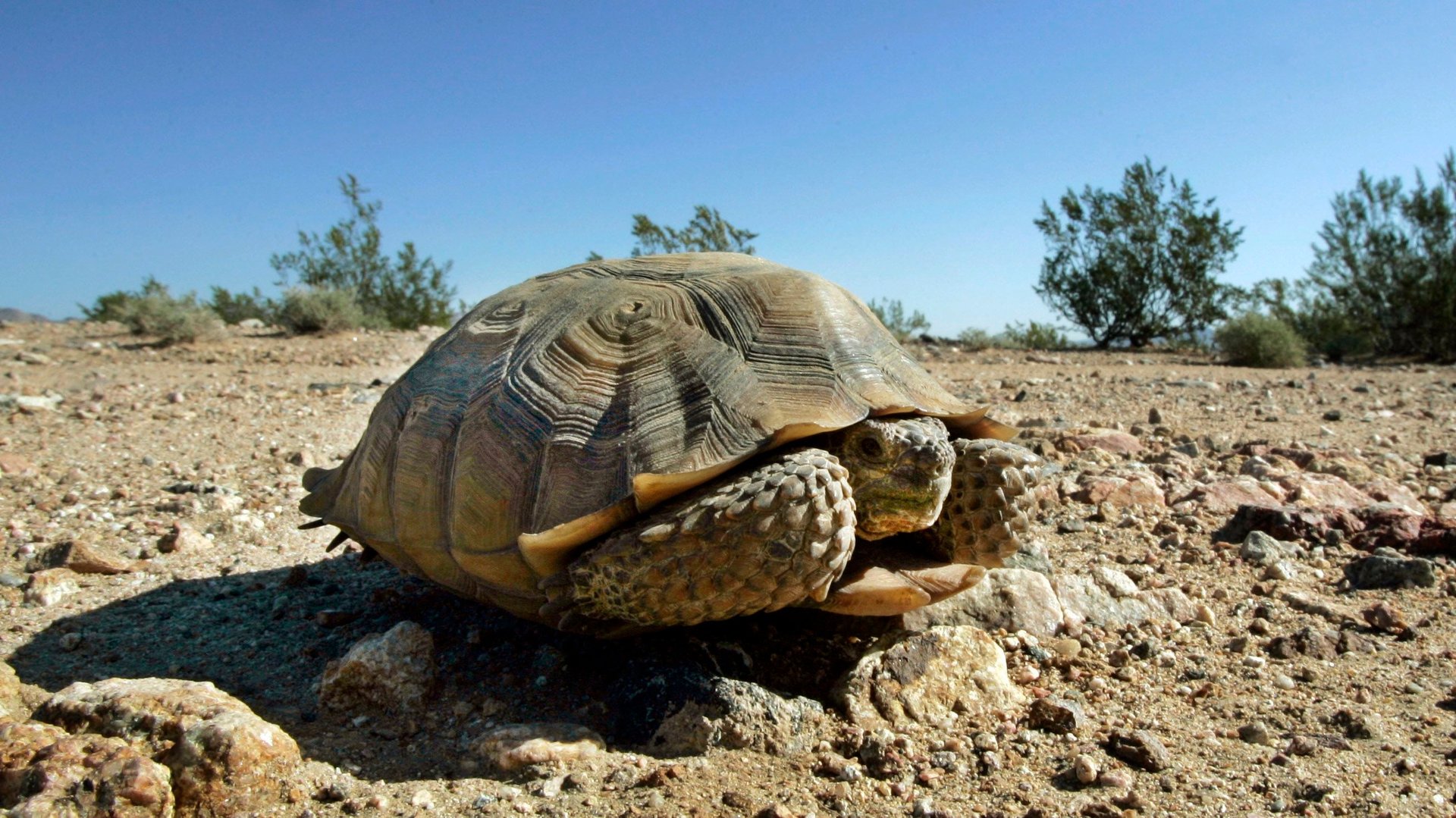The imperiled desert tortoise is paying the price for the solar boom
It’s an unfortunate tradeoff for staunch environmentalists: Building giant solar power plants in the desert could save the desert tortoise from climate change but also risk bulldozing them into oblivion during construction of the projects.


It’s an unfortunate tradeoff for staunch environmentalists: Building giant solar power plants in the desert could save the desert tortoise from climate change but also risk bulldozing them into oblivion during construction of the projects.
In a new report, the US Fish and Wildlife Service (FWS) estimates that as many as 2,117 desert tortoise eggs, juveniles and adults live in the path of two huge photovoltaic farms to be constructed by First Solar in the California desert near Las Vegas. “We expect that many of the small desert tortoises and eggs within the boundaries of the solar facilities are likely to be killed or injured during construction, although the applicants would likely find some small animals and translocate them” states the FWS. The tortoise is listed as threatened under the federal and California endangered species acts.
The 300-megawatt (MW) Stateline and the 250-MW Silver State South power plants are to be built on 4,039 acres of federal land of adjacent to another huge Mojave Desert solar project, BrightSource Energy’s 370-MW Ivanpah solar complex. Biologists found and relocated 173 tortoises on the Ivanpah site but the FWS concluded that construction would “harass”—to the point of death—2,325 juveniles living within a two-mile (3.2 kilometer) radius of the project.
Desert tortoise populations have been declining for decades due to human development of their habitat. The report noted that young tortoises in particular have been disappearing, which does not bode well for the future.
“Some of the most apparent threats to the desert tortoise are those that result in mortality and permanent habitat loss across large areas, such as urbanization and large-scale renewable energy projects,” the report states. “However, we remain unable to quantify how threats affect desert tortoise populations.”
Another worry: The new solar projects in combination with other non-solar development in the area would further isolate the surviving desert tortoises, cutting off the corridors that allow them to meet and mate with other tortoises and expand their numbers.
The good news is the FWS determined that the new solar projects doesn’t risk wiping out the tortoises from the area; they are estimated to affect 94 adult tortoises, or 2% of the animals in the surrounding Ivanpah Valley.
But take those numbers with a big grain of salt. When desert tortoise surveys were done before construction began on the $2 billion Ivanpah solar power plant in 2010, biologists predicted there were, at most, 32 of the critters there. As the bulldozers began rolling, they kept finding more tortoises, eventually estimating there to be as many as 162 adults and 608 juveniles roaming the site.